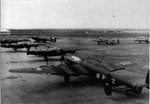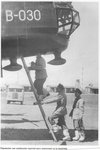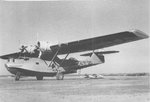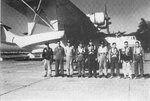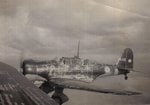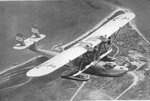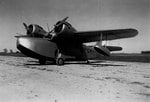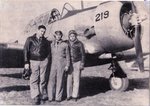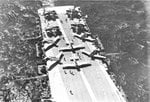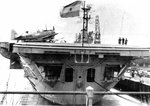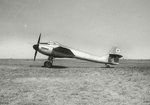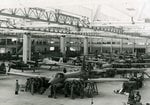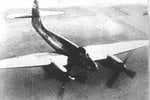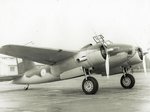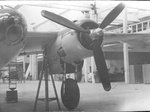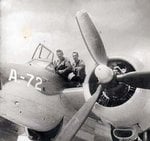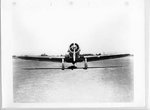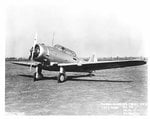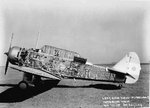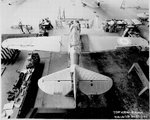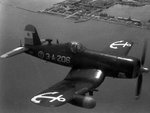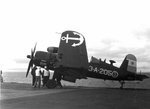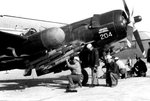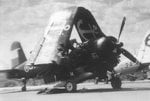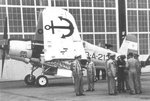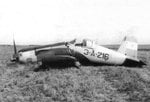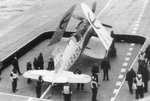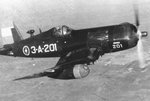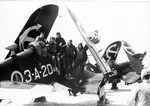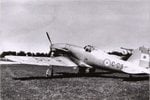- Thread starter
- #101
Navigation
Install the app
How to install the app on iOS
Follow along with the video below to see how to install our site as a web app on your home screen.
Note: This feature may not be available in some browsers.
More options
You are using an out of date browser. It may not display this or other websites correctly.
You should upgrade or use an alternative browser.
You should upgrade or use an alternative browser.
South American Air Forces
- Thread starter gekho
- Start date
Ad: This forum contains affiliate links to products on Amazon and eBay. More information in Terms and rules
More options
Who Replied?- Thread starter
- #102
- Thread starter
- #103
At least 17 Catalinas were bought at Canada between 1946 and 1948, entering of service only 12 of them, being the rest used as spare parts. They were coded 2-P-2, with the exception of one unit, that was used as a trainer and was coded 1-G-1. These aircrafts had a great importance at the argentinian navy, since they were the first aircrafts to conect the Antarctic and Buenos Aires, they took part in many war actions in 1955, they searched lost ships, they patroled the south of the Patagonia etc.....
Attachments
- Thread starter
- #104
- Thread starter
- #105
- Thread starter
- #106
Argentina purchased 30 Model 8A-2s in 1937 and received them between February and March 1938. Their serial numbers were between 348 and 377. These remained in front line service until replaced by the I.Ae. 24 Calquin, continuing in service as trainers and reconnaissance aircraft until their last flight in 1954. They served at the Grupo "A" de la Escuela de Aplicación de Aviación based at BAM El Palomar and at the Regimiento Aéreo Nº3 (Air Regiment No.3) de Bombardeo Liviano (Light Bombing) based at BAM El Plumerillo. This version was fitted with fixed undercarriage, ventral gun position and powered by 840 hp (626 kW) Wright R-1820-G3 Cyclone.
Attachments
Last edited:
Nice shots!
In a way but personally I don't think very many aircraft come close to the French interwar bombers in terms of ugliness, although the British interwar bombers of the late 20's early 30's are close. Lincoln not so much, not a good looking as the Lancaster but not as ugly as the Frenchies.
I think the Lincoln was ugly almost like french pre war IMHO the only thing lacking on that nose are curtains
In a way but personally I don't think very many aircraft come close to the French interwar bombers in terms of ugliness, although the British interwar bombers of the late 20's early 30's are close. Lincoln not so much, not a good looking as the Lancaster but not as ugly as the Frenchies.
- Thread starter
- #108
Initially created to compete for a United States Navy contract dated February 28, 1928, the prototype Model 9, XPY-1, was designed by Captain Dick Richardson and Isaac M. 'Mac' Laddon. Beginning construction in March 1928, the aircraft was ready for its first flight by the end of the year. Lieutenant A. W. Gorton made the first flight out of Anacostia NAS, Washington, D.C.. The production contract was opened to other bidders, and the Glenn L. Martin Company undercut and was awarded the contract to construct the plane as the Martin P3M-1 and P3M-2.
A new contract was placed by the US Navy on May 26, 1931, for a prototype of a developed version of the Model 9, XPY-1, designated the Model 22 Ranger by Consolidated. Incorporating features of the Model 16 Commodore such as the enclosed flight deck, designated the XP2Y-1 by the Navy, this new prototype had the same 100 ft parasol wing, but became a sesquiplane with a smaller wing mounted lower, at the top of the hull, replacing the booms that had supported the stabilizing pontoons on the XPY-1. Two Wright R-1820-E1 Cyclone engines, were located close below the top wing and had narrow-chord cowlings. A third similar engine was mounted on a strut along the centerline above the wing, but removed after the first test in April 1932. The Navy ordered 23 P2Y-3s as production models similar to the P2Y-2s that were modified from the original batch of P2Y-1.
The Argentinian Navy bought six units in 1936. They were armed at the BAPB workshop and joined the Patrol Boat School, replacing the Southamptons. They took part in very important misions, travelling to the Falkland islands. In 1946/47 they were transfered to the ESAN, being replace two years later by the Catalinas.
A new contract was placed by the US Navy on May 26, 1931, for a prototype of a developed version of the Model 9, XPY-1, designated the Model 22 Ranger by Consolidated. Incorporating features of the Model 16 Commodore such as the enclosed flight deck, designated the XP2Y-1 by the Navy, this new prototype had the same 100 ft parasol wing, but became a sesquiplane with a smaller wing mounted lower, at the top of the hull, replacing the booms that had supported the stabilizing pontoons on the XPY-1. Two Wright R-1820-E1 Cyclone engines, were located close below the top wing and had narrow-chord cowlings. A third similar engine was mounted on a strut along the centerline above the wing, but removed after the first test in April 1932. The Navy ordered 23 P2Y-3s as production models similar to the P2Y-2s that were modified from the original batch of P2Y-1.
The Argentinian Navy bought six units in 1936. They were armed at the BAPB workshop and joined the Patrol Boat School, replacing the Southamptons. They took part in very important misions, travelling to the Falkland islands. In 1946/47 they were transfered to the ESAN, being replace two years later by the Catalinas.
Attachments
- Thread starter
- #109
Six units were bought in 1946. They joined the Patrol Boat Squadron, being coded 3-P-25 first and later .-P-50. They flew for at least four years to the Antartic and they were finally donated to Paraguay.
Attachments
- Thread starter
- #110
The Argentinian Navy acquired several aircrafts; a total of 94 units of the BC-1A, AT-6 and SNJ-4/5 versions that were modified to operate from carriers. The first T-6s arrived in 1947, joining the Aeronaval Fighter Squadrons, General Porpouses units and Naval Air Arm Schools, where the T-6s were until 1969, when they were retired, the main trainers of Argentina.
Attachments
Last edited:
- Thread starter
- #111
The I.Ae. 30 "Ñancú" was an Argentine twin piston engined fighter designed by the Instituto Aerotécnico (AeroTechnical Institute) in the late 1940s, similar to the de Havilland Hornet, but made of metal rather than wood. Only one prototype was completed; the project was abandoned in favour of a jet aircraft.The I.Ae. 30 "Ñancú", named after an indigenous eagle of Patagonia, was designed by Italian engineer Cesare Pallavecino, who had come to Argentina in 1946. Pallavecino led a team of Argentine technicians and engineers in developing the concept of a high-speed escort fighter, intended to be operated in conjunction with the Avro Lincoln bombers used in the Argentine Air Force.
The I.Ae. 30 had a metal structure, its powerplants consisted of two Rolls-Royce Merlin 604 engines, each developing 1,800 hp at 3,000 RPM, and four-bladed propellers. The armament would consist of six 20 mm Oerlikon automatic cannons mounted in the nose, although later plans called for 20 mm Hispano-Suiza cannons as well as a 250 kg bomb under the fuselage and two batteries of five 83 mm rockets fitted underneath the wings. Nevertheless, the prototypes were unarmed. By the end of 1947, a contract was received for the first of three projected prototypes. On 9 June 1948 the first prototype was ready for ground tests and on 17 July 1948, the I.Ae. 30 took to the air for the first time, piloted by Captain Edmundo Osvaldo Weiss.
The test results proved that the aircraft possessed good flying characteristics as well as meeting performance specifications. During a cross country flight, from Córdoba to Buenos Aires, the Ñancú reached a level speed of 780 km/h, setting a new piston engined speed record in South America, an achievement that has not been surpassed. Although the prototype was achieving design goals, the Fuerza Aérea Argentina was already considering the jet I.Ae. 27 Pulqui I as their future fighter program. With official interest diminishing, in early 1949, the sole flying prototype was badly damaged in a landing accident when test pilot Carlos Fermín Bergaglio misjudged a landing and crashed. Although the pilot was uninjured and the aircraft could have been repaired, the Fabrica Militar de Aviones made a decision to abandon the project with the wrecked prototype, as well as the two unfinished prototypes still at the factory, being scrapped.
The I.Ae. 30 had a metal structure, its powerplants consisted of two Rolls-Royce Merlin 604 engines, each developing 1,800 hp at 3,000 RPM, and four-bladed propellers. The armament would consist of six 20 mm Oerlikon automatic cannons mounted in the nose, although later plans called for 20 mm Hispano-Suiza cannons as well as a 250 kg bomb under the fuselage and two batteries of five 83 mm rockets fitted underneath the wings. Nevertheless, the prototypes were unarmed. By the end of 1947, a contract was received for the first of three projected prototypes. On 9 June 1948 the first prototype was ready for ground tests and on 17 July 1948, the I.Ae. 30 took to the air for the first time, piloted by Captain Edmundo Osvaldo Weiss.
The test results proved that the aircraft possessed good flying characteristics as well as meeting performance specifications. During a cross country flight, from Córdoba to Buenos Aires, the Ñancú reached a level speed of 780 km/h, setting a new piston engined speed record in South America, an achievement that has not been surpassed. Although the prototype was achieving design goals, the Fuerza Aérea Argentina was already considering the jet I.Ae. 27 Pulqui I as their future fighter program. With official interest diminishing, in early 1949, the sole flying prototype was badly damaged in a landing accident when test pilot Carlos Fermín Bergaglio misjudged a landing and crashed. Although the pilot was uninjured and the aircraft could have been repaired, the Fabrica Militar de Aviones made a decision to abandon the project with the wrecked prototype, as well as the two unfinished prototypes still at the factory, being scrapped.
Attachments
Last edited:
- Thread starter
- #112
The FMA I.Ae.24 Calquin was a 2 seat light attack bomber. It had two 1,050 hp Pratt Whitney R-1830-SC-G Twin Wasp radial piston engines. The max speed was was 273 mph (440 km/h) at optimum altitude with an initial climb rate of 2,460 ft/minute. It was armed with four 20mm cannons and up to 1,764 lb (800kg) of bombs. Its design was influenced by the de Havilland Mosquito. The prototype first flew in June 1946 and was later ordered into production. The first production plane flew in July 1947 and eventually 200 aircraft were made as the Argentine air force's standard light bomber.
Despite the lower performance obtained in testing, the I.Ae.24 Calquin was able to undertake an attack and light bombing role, replacing the Northrop A-17 in the Argentine Air Force inventory. A total of 100 aircraft were ordered, with the first production example flying on 4 July 1947. Fifty pilots and crew members were killed in accidents related to Calquín operational service and trials. Test pilots considered the aircraft unstable "on all three axis" and required careful handling. Series production was completed by 1950, with operational service continuing until 1957 although a small number of aircraft were still in squadron use until 1960. Several I.Ae.24s took part of a series of air-to-ground attack missions during the 1955 Revolución Libertadora.
Despite the lower performance obtained in testing, the I.Ae.24 Calquin was able to undertake an attack and light bombing role, replacing the Northrop A-17 in the Argentine Air Force inventory. A total of 100 aircraft were ordered, with the first production example flying on 4 July 1947. Fifty pilots and crew members were killed in accidents related to Calquín operational service and trials. Test pilots considered the aircraft unstable "on all three axis" and required careful handling. Series production was completed by 1950, with operational service continuing until 1957 although a small number of aircraft were still in squadron use until 1960. Several I.Ae.24s took part of a series of air-to-ground attack missions during the 1955 Revolución Libertadora.
Attachments
Last edited:
- Thread starter
- #113
During the WWII Argentina stood neutral, and because of that the country suffered a lack of raw materials necesary for aviation, especially duralumin. Due to the situation and the need of continuing with the advanced trainning of the argentinian pilots, the goverment requested to the Aeronautical Institute (Instituto Aeronautico or I.A.e) the development of an advanced trainer that could be made with the raw materials available at the country. The result was an aircraft very similar to the NA T-6 Texan, but made entirely of wood, and fitted with a Whirlwind engine built under licence. The proyect was baptized I.A.e. 22, and nicknamed "Diente de Leon" (Lion´s tooth).
The 29 of may 1944 was introduced by Juan Domingo Peron, by that time War Minister of Argentina. The Aviation Command oredered two series of 100 units each one, being delivered 201 aircrafts for 1950. The last examples were fitted with the new Armstrong Siddeley "Cheetah" engine, increasing slightly their performance. The first units were delivered to the Military Aviation School (EAM), being used as armed advanced trainers. However, these aircrafts saw real combat during the 1955´s coup d'état, when the EAM rise up against the goverment of Juan Domingo Perón, being used as ground attack fighters and reconnaissance aircrafts. They were retired from service short after, since the wood wasnt suitable for Argentinian weather.
The 29 of may 1944 was introduced by Juan Domingo Peron, by that time War Minister of Argentina. The Aviation Command oredered two series of 100 units each one, being delivered 201 aircrafts for 1950. The last examples were fitted with the new Armstrong Siddeley "Cheetah" engine, increasing slightly their performance. The first units were delivered to the Military Aviation School (EAM), being used as armed advanced trainers. However, these aircrafts saw real combat during the 1955´s coup d'état, when the EAM rise up against the goverment of Juan Domingo Perón, being used as ground attack fighters and reconnaissance aircrafts. They were retired from service short after, since the wood wasnt suitable for Argentinian weather.
Attachments
Last edited:
- Thread starter
- #114
Eight Valiants arrived to Argentina in 1947, being followed by another 28 more examples, and one more aircraft by exchange. They were used as advanced trainers amd in operational attack squadrons. They were withdrawn from service in 1960 and in 1963 some were donated to Paraguay.
Attachments
- Thread starter
- #115
Used as the personal transport of the Navy Minister, it was also used as aerial navigator trainer. It was destroyed due to an accident in 1944, when the brakes failed and the aircraft went to stop over the railway tracks, being run over by a train.
Attachments
Last edited:
- Thread starter
- #116
The last prototype airplane North American built at the General Aviation plant in Dundalk, Md., was for the NA-16 trainer series, later produced in California. The low-wing monoplane had open cockpits in tandem and a fixed, unfaired undercarriage. Made mostly of metal, but with some fabric on the rear fuselage, it was submitted to the Army Air Corps for evaluation within a month of its first flight. The design was selected for production as a basic trainer, although the Air Corps requested the cockpits be enclosed, fairing installed on the undercarriage and the engine changed to a 600-horsepower P&W R1340 engine. With these modifications, and a new designation of NA-18, the prototype was eventually sold to Argentina. The production versions launched North American as a manufacturer of training aircraft, starting with 267 BT-9s and 330 BC-1 "basic combat" trainers. In all, more than 17,000 derivatives of the NA-16 were built in North American's Los Angeles, Calif., and Dallas, Texas, plants during the 1930s and 1940s.
Attachments
- Thread starter
- #117
The Chance Vought F4U Corsair was a carrier-capable fighter aircraft that saw service primarily in World War II and the Korean War. Demand for the aircraft soon overwhelmed Vought's manufacturing capability, resulting in production by Goodyear and Brewster: Goodyear-built Corsairs were designated FG and Brewster-built aircraft F3A. From the first prototype delivery to the U.S. Navy in 1940, to final delivery in 1953 to the French, 12,571 F4U Corsairs were manufactured by Vought, in 16 separate models, in the longest production run of any piston-engined fighter in U.S. history (1942–1953). The Corsair served in with the U.S. Navy, U.S. Marines, Fleet Air Arm and the Royal New Zealand Air Force, as well as the French Navy Aeronavale and other, smaller, air forces until the 1960s. It quickly became the most capable carrier-based fighter-bomber of World War II. Some Japanese pilots regarded it as the most formidable American fighter of World War II, and the U.S. Navy counted an 11:1 kill ratio with the F4U Corsair.
Attachments
Last edited:
- Thread starter
- #118
In 1957 the Argentinian Navy acquired the Corsair night and day fighter version, being destinated to Combat Aeronaval Squadron based at Punta del Indio. Some months later theses fighters were destinated to the Major Espora Aeronaval Base, operating from the carrier "Independencia", that joined the Argentinian Navy in 1959. The Corsairs also operated from secondary airfields, performing diverse tasks, thanks to their wide weapon capacity. These fighters had a very important role during the 1963 revolution, and also in 1965 during the border incidents with Chile. However during this campaign it became obvious that the Corsair was getting older, and they were finally withdrawn that year.
Attachments
Last edited:
- Thread starter
- #119
Five C-54 were bought in 1947, being one of these aircrafts the first airplane which flew from the continent to the Antarctic, as well as the first airplane which crossed the Artic Cicle on the same flight. They took part in many rescue misions over the Antarctic, flying more than 100.000 hours. All of them were lost in accidents.
Attachments
- Thread starter
- #120
Some aviation experts consider the FIAT G55 Centauro the best single seat fighter produced for the Italian air force in World War Two. The Fiat G55 Centauro was a redesigned version of the G50 Freccia. Differences included a DB 605 A-1 engine, an improved fineness ratio of the fuselage and a redesigned wing, built in 2 sections ,bolted together at the centerline for greater efficiency. Metal stressed skin was used and the metal framed airlerone was fabric covered. The first prototype was flown on April 30, 1942 and production started in the beginning of 1943. The initial model was the G55/0 which held a 20mm MG 151 cannon and (4) 12.7mm Breda SAFAT machine guns.
The "O" model was succeeded by the "I" model which held three 20mm MG151′s and two Breda SAFAT machine guns. Deliveries of the G55 to the 53rd Stormo and the 353rd Squadriglia of the 20th Gruppo just started when Italy surrendered to the Allies on September 8, 1943. Because of Italy's surrender, the G55 did not see combat with the Regia Aeronautica. However, factories which were building the G55′s were still under the control of the Republica Sociale Italiana (Salo Republic) in northern Italy, and several thousand were ordered. The G55 became the RSI's standard aircraft for their air force. Shortages began to develope as the DB 605 A-1 engines became scarce and only 105 FIAT G55′s were produced by the time the Allies overran all of Italy. Other models developed based on the G55 which were the G55/II with 5 20mm cannons and the G55/S Torpedo Fighter, which carried one 2,176 lb Whitehead fiume torpedo beneath the fuselage. Both of these variations of the G55 flew in 1944.
After the war, production of the G55 resumed for foreign export and the newer G55/A's and G55/B's were built. Fiat reinstalled the production lines to produce the G.55A armed with either 2 wing-mounted 12.7mm machine guns or 2 20mm canon plus the 2 12.7mm machine guns in the cowling. 19 went to the Italian air force and 30 were supplied to Argentina. Argentina returned 17 that were then sold to Egypt in 1948, being armed with 4 12.7mm machine guns. A 2-seat trainer version, the G.55B was built in 1946 with 10 going to the Italian air force and 15 to Argentina in 1948.
The "O" model was succeeded by the "I" model which held three 20mm MG151′s and two Breda SAFAT machine guns. Deliveries of the G55 to the 53rd Stormo and the 353rd Squadriglia of the 20th Gruppo just started when Italy surrendered to the Allies on September 8, 1943. Because of Italy's surrender, the G55 did not see combat with the Regia Aeronautica. However, factories which were building the G55′s were still under the control of the Republica Sociale Italiana (Salo Republic) in northern Italy, and several thousand were ordered. The G55 became the RSI's standard aircraft for their air force. Shortages began to develope as the DB 605 A-1 engines became scarce and only 105 FIAT G55′s were produced by the time the Allies overran all of Italy. Other models developed based on the G55 which were the G55/II with 5 20mm cannons and the G55/S Torpedo Fighter, which carried one 2,176 lb Whitehead fiume torpedo beneath the fuselage. Both of these variations of the G55 flew in 1944.
After the war, production of the G55 resumed for foreign export and the newer G55/A's and G55/B's were built. Fiat reinstalled the production lines to produce the G.55A armed with either 2 wing-mounted 12.7mm machine guns or 2 20mm canon plus the 2 12.7mm machine guns in the cowling. 19 went to the Italian air force and 30 were supplied to Argentina. Argentina returned 17 that were then sold to Egypt in 1948, being armed with 4 12.7mm machine guns. A 2-seat trainer version, the G.55B was built in 1946 with 10 going to the Italian air force and 15 to Argentina in 1948.
Attachments
Users who are viewing this thread
Total: 1 (members: 0, guests: 1)





